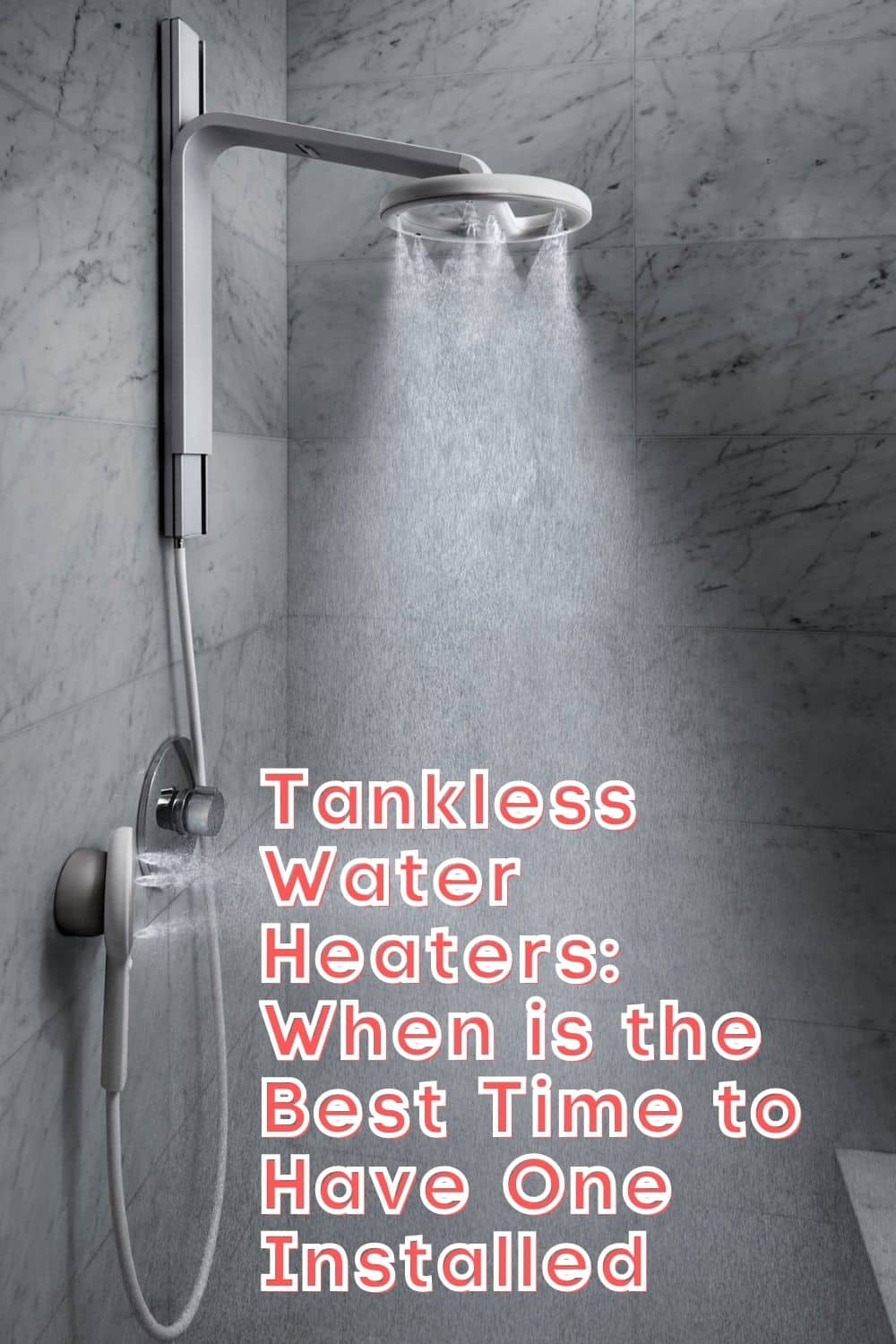First created in the 1890s, the tankless water heater was an experiment in creating a potentially cheaper alternative to the storage-tank water heater. While these began as inefficient options initially, the tankless systems were developed until the first electric version was created in the late 1920s. Though gas-powered models were far more efficient, the two models of tankless water heaters steadily became better until they entered the United States market in the 1990s.
Today, tankless water heaters are some of the best alternatives to modern water heating issues. The system has a variety of water capacities and specifications to suit each household’s needs. It provides houses with hot water all year round, no matter the time of day. And to make it better, tankless systems are also an energy-saving option compared to a traditional tank water heater, saving you money on energy costs.
This article will help you determine when is the best time to have one of these water heater systems installed in your home and the benefits you get from tankless water heaters in Phoenix.
Tankless vs. Tank water heaters
A tankless water heater is a system that connects to your water, gas – or electric, depending on the power the model uses – and vent connections. When you turn on the hot water from anywhere in your house, the system detects water coming in and starts the power source. It heats the water through heat exchangers inside it, applying heat to the water before sending it back out through the plumbing to the tap. Once you turn it off, the system shuts off too.
Similarly, a tank water heater uses gas or electricity to work. The cold water is delivered through the pipes to the bottom of the tank, where the system’s heating elements are located, to be heated. When the water in the tank becomes hot enough, it rises to the top as more cold water is drawn in. As the hot water is used, it gets drawn through the pipes until the tank empties, leaving only cold water. If the hot water isn’t being used, the water in the tank continues to be heated until it’s needed.
Benefits of tankless water heaters
Lower energy bills
When the water from a storage tank stands unused for a long time, the heat naturally fades, leaving the system to turn on again to reheat what amounts to 40 to 50 gallons of water. However, due to how a tankless water heater works, the energy is only used when you need hot water, effectively lowering the final cost of your energy bills. The US Department of Energy has shown that tankless systems are about 20 to 35% more energy-efficient than a traditional water heater.
Endless supply of hot water
Ideal for small houses, tankless water heaters can heat water for as much time as you need it. Also called on-demand water heaters, these systems can run effectively if your house has access to water, gas, and electricity. Turning on the tap or shower is all you need to have hot water without the shock of cold water bursts. There’s no need to wait for your water to become hot again.
A longer lifespan
Since the system is only used when needed, the parts inside a tankless water heater don’t tend to wear down as fast as a traditional system’s. This means that a tankless system typically lasts twice as long, lasting about twenty years instead of the tank system’s ten. Proper maintenance and routine checking can extend the water heater’s lifespan even further.
When to install a tankless water heater
If you’re looking into getting a new tankless water heater, any time would be a great time to switch systems. Exchanging your tank for a tankless system saves you energy costs and can also last far longer. On top of that, the additional room that the storage tank took can now be used for other purposes. However, there are a few things you need to consider when choosing to switch.
Tankless water heaters are rather costly. An average system costs about $1000 compared to the storage tank’s $400 cost. The payback you also get from saving energy is fairly small, saving you about $100 a year. The good news is that the savings come into effect far more after six years. By this time, tank-type water heaters are likely too old to work efficiently. At this point, you now get fourteen more years of eco-friendly heated water.
Your tank water heater is getting old or wearing down
One of the best times to look into getting a new tankless water heater installed is when your old tank gets old or breaks down. As with most machinery, the tank system loses its efficiency as it ages, leaving you with colder water than you had before. This can show up in different ways, with rusty-colored water or odd sounds coming from it. Furthermore, the lower water pressure caused by an older tank water heater might cause sediments to enter the water through your taps and showerheads.
Consider the age of your house as well when making a choice. Due to traditional water heaters being far more common in homes in Phoenix and the rest of the United States, new houses are typically built with storage tanks for the water heater. The age of your house can help you determine how old the tank system is and whether or not it’s already been replaced with a newer model.
Conclusion
Tankless water heaters are an excellent and environmentally sustainable source of hot water. It saves home and business owners money on energy while providing warm water anytime required. However, as with other HVAC systems, one of the greatest times to upgrade is when your current system is too old to function properly.





Leave a Reply